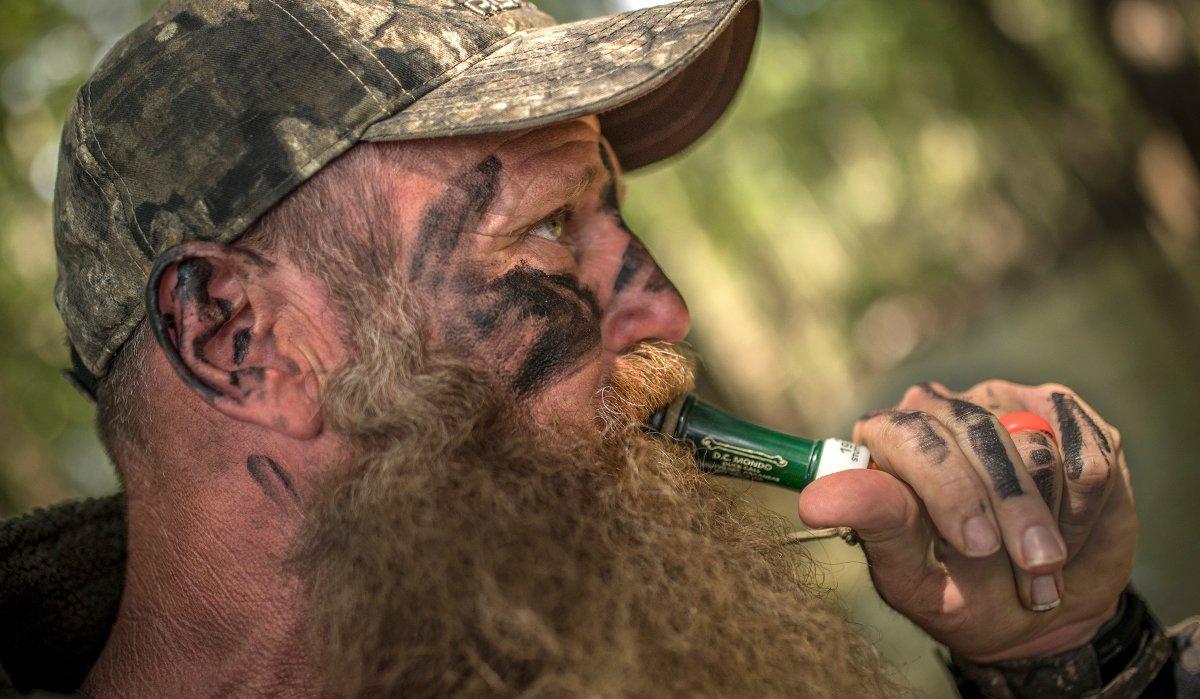Expert advice on the best sounds to close the deal
Around a campfire years ago, I chuckled as a well-known turkey hunter talked about his former boss. He sure could make 'em gobble, the guy said, pausing for effect. And he didn't have a clue about what to do with them after that.
That sometimes holds true for duck callers, too. We practice the standard stuff — highballs, comeback calls, single quacks and feeding chuckles — and many of us are pretty good at getting the attention of birds and turning them toward our spreads. Calling gets tricky, however, when we must convince wary ducks to finish over the decoys. Many days, birds flare, and we wonder if another approach might have persuaded them to put their wings back and feet down instead of circling endlessly and then departing.
There's no easy answer, but the pros know a few tricks. Here's how several high-profile hunters call to pull birds sure-kill close.
Green Timber
Justin Martin, general manager of Duck Commander, strives for realism, which means he usually calls just enough to keep the interest of ducks as they approach.
I do this so I don't draw much attention to myself and keep their focus on the decoys and not the blind or the hunters, he said. Many times, single quacks will finish the job, or some light feed calling. Don't overlook using a drake whistle, too.
And often, silence and realistic motion seals the deal better than calling.
A jerk string can often be the best finishing call you have, Martin said. Just some little light pulls and shakes allow them to really key in and make your decoys come to life.
Southern Ducks on Public Water
Veteran Georgia hunter and Realtree.com waterfowl contributor James Buice hunts many popular wildlife management areas and timber holes, and his finishing approach is simple: Less is more.
(I use) single quacks, but be careful to not do alarm quacks, which is what a lot of people do, he said. I rely more on feeding chuckles and low calling. Unless I lose them, we will get their attention with quacks and feeding calls mixed in, and then just let the birds work the decoys.
To boost realism, Buice runs calls that produce specific tones.
I prefer wooden calls for this — timber-style (models) that are really choked down in the barrel, he said. And it's one of the few times I'll actually occasionally go with a double-reed, but that's rare. It's really hard to beat a good wooden call for tone and mellow sounds. A call with a lot of hold will allow you to push whines on the back end of your quacks and feed calls.
Small Destination Waters: Lovett's Approach
I'm no pro, but I hunt lots of small destination waters — potholes, backwaters, prairie sloughs and ice holes, for example — where ducks want to congregate without much persuasion. In those scenarios, calling often just provides reassurance that the area is safe and your decoys are real.
Soft quacks or chuckles can bring wary ducks a few yards closer for better shots or turn them back toward your spread if they start to drift. And although mallard calls work for most ducks, species-specific vocalizations can be critical. Wigeon whistles, pintail whistles, gadwall blats, bluewing quacks and drake greenwing peeps might convince those species that they're welcome.
Above all, I avoid calling that might focus attention on my hide, staying mostly silent as ducks glide overhead or bank toward me. Good concealment kills more birds than calling in many close-quarters situations.
Big Water
Jeremy Dersham, owner of Ridge and River Running Outfitters, plies the open water of Pool 9 of the Mississippi River in southwestern Wisconsin, a multispecies destination with ample hunting pressure. Typically, he gets the attention of passing flocks with greeting calls followed by hail or comeback calls and then watches how they react.
A lot of times, the birds will come in for a look, and at that point, I shut up, he said. If the birds begin to cup, I'll let them commit, but if they begin gaining altitude, I start with conservative series of greeting calls until they're back on my line.
Most days, Dersham's calling mimics what nearby birds are already doing.
Throughout the season, we have birds already on the water loafing, feeding and just being ducks, he said. You can hear them using greeting calls, feeding calls and just basic quacking. By mimicking what they're doing, there have been many times I've been working a flock that ends up making numerous passes only to look up and have another flock cupping down to the spread.
And like any seasoned caller, Dersham always pays attention for subtle clues that he should change tactics.
Too many times, I've seen and heard people scream on their calls at every passing flock of birds, he said. The birds are paying no attention, yet the callers are screaming on their calls until their lungs give out. It's similar to reading the body language of the person you're having a conversation with. If someone is giving one-line answers and is beginning to walk away, there's a good possibility the conversation has ended. The same goes with birds. Today, I try to have conversations with birds rather than calling at them.
Click here for more Realtree waterfowl hunting content. And check us out on Facebook.









